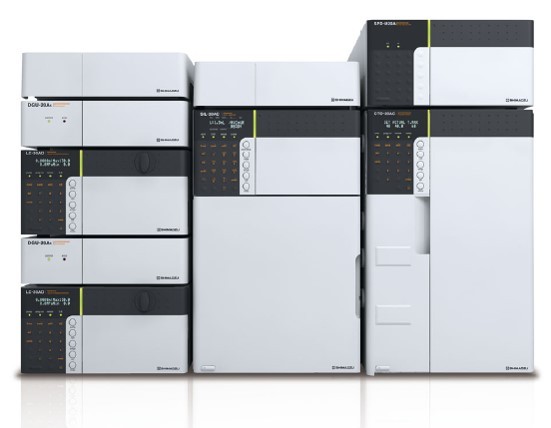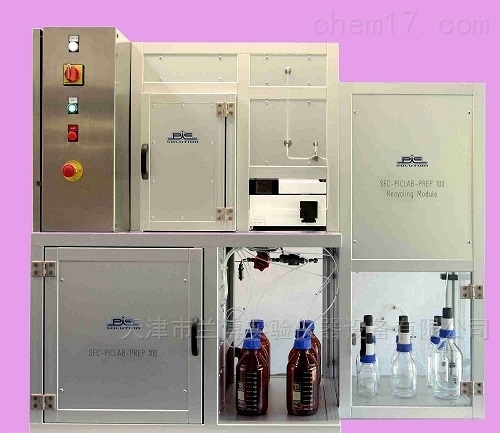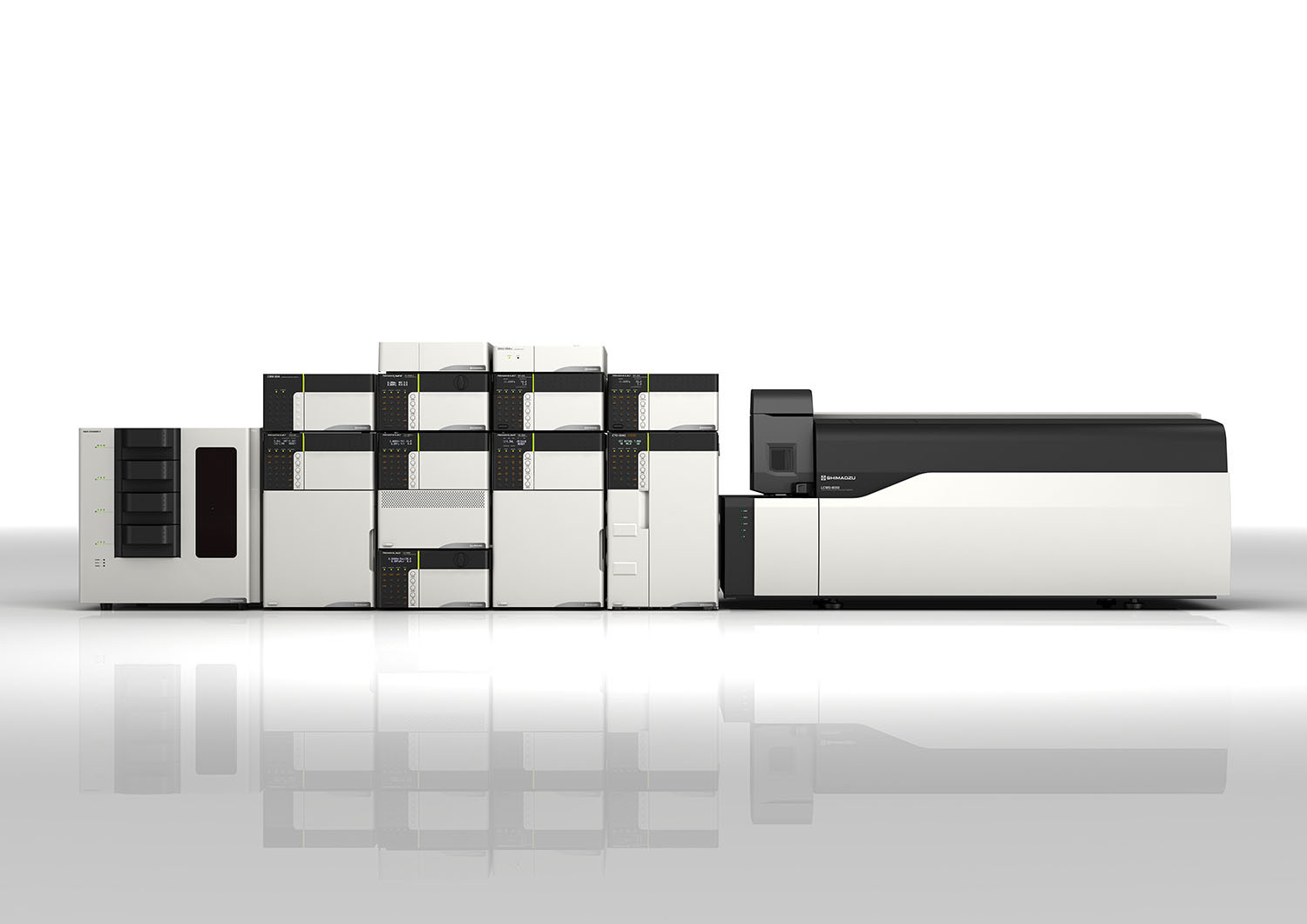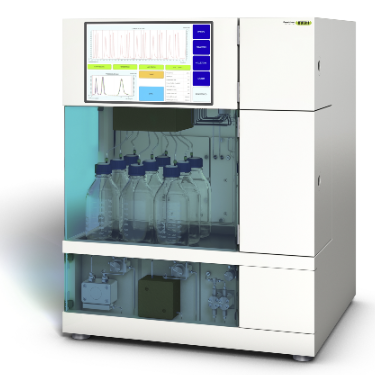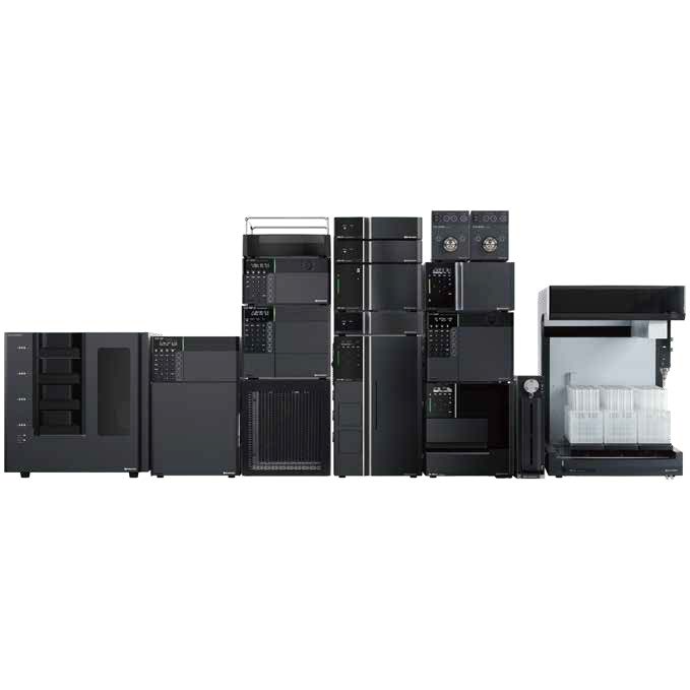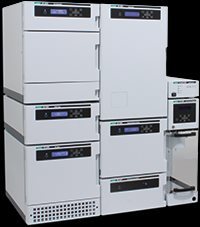
Even though Supercritical Fluid Chromatography (SFC) was first demonstrated by Klesper et al. in 1962, 6 – 7 years earlier than High-Performance Liquid Chromatography (HPLC), its history is unfortunate and it has never been a main stream of chromatography. Why?Partly because an automated liquid chromatograph (LC), namely, an amino acid analyzer by Spackman, Stein and Moore, had already been commercially available in the late 1950’s and there were actual needs for LC, while therewere no such needs for SFC except for some exotic samples such as metalloporphyrins and metallic chelates at that time. Rapid development of HPLC occurred in the 1970’s overshadowed the development of SFC taken place at the same time. However, there are remarkable research works done in the 1960’s, the 1970’s and the 1980’s that realized the today’s modern SFC, and this poster will review these works.
方案详情

Packed-Column SFC 2008, Switzerland Supercritical Fluid Chromatography: aNew Technology? Muneo Saito JASCO Corporation, Tokyo, Japan JASCO global homepage: http://www.jascoinc.com Introduction Even though Supercritical Fluid Chromatography (SFC) was first demonstrated by Klesper et al. in 1962, 6-7 years earlier than High-Performance Liquid Chromatography (HPLC), its history is unfortunate and it has never been a main stream of chromatographyW以hy? Partly because an automated liquid chromatograph (LC), namely, an amino acid analyzer by Spackman, Stein and Moore, had already been commercially available in the late 1950’s and there were actual needs for LC, while there were no such needs forSSFC except for some exotic samples such as metalloporphyrins and metallic chelates at that time. Rapid development of HPLC occurred in the 1970's overshadowed the development of SFC taken place at the same time.However, there are remarkable research works done in the 1960's, the 1970's and the 1980's that realized the today's modem SFC, and this poster will review these works. Research works in the 1960’s Klesper, Corwin and Turner first demonstrated Supercritical Fluid Chromatography (SFC) in"Communications to the editoientitled High Pressure Gas Chromatography above Critical Temperatures" (1)in 1962. They used dichlorodifluoromethane(Tc=112℃)) aarndd.n monochlorodifuloromethane (Tc=96C) and at the pressures above 1000 psi and 1400 psi, respectively,to elute Ni etioporphyrin Il and etioporphyrin Il from polyethylene glycol stationary phase. They even stated“The porphyrinscould be recovered at the outlet valveThis means that they already predicted the possibility of preparative SFC. Figure 1 shows the historical SFC apparatusdescribed in ref. (1).). Sie, Beersum and Rijnders published a series of articles on"High-Pressure Gas Chromatography with SupercriticalFluids" in Separation Science (2-5) in 1966 and 1967. In these articles, they extensively used carbon dioxide as mobilephase and thoroughly studied its behavior from both theoretical and experimental points of view Figure 2. Supercritical CO2 Apparatus developed by Sie Figure 1. The first SFC Apparatus by Klesper et al. in1962 (ref-1). Beersum and Rijnders in 1966. (1)=CO,cylinder,(2)=200-L water bath,(4),(5)= pressure regulators,(8)= injector(9)=6 mm ID x1 mL column iminersed in liquid bath, (10)=restriction valve, (11)=flam zation detector (FID). Figure3. Chromat trated by Sie et al. (ref-2). (ref-2).Klespper’s group reviewed "Apparatus and Materials foHyperpressure Gas Chromatography of NonvolatileCompounds" (6) in 1968. In the article, they describe)ed themeans to control the flow rate and the backpressure, independently. It is also remarkable that a spectro-photometer equipped with a high-pressure flow cell wasused as a detector in the late 1960’s, whereas in HPLC.only a crude low-pressure Hg lamp based singlenthwavelength UV photometer was introduced.1.l Giddings, Myers and King published an article on "DenseGas Chromatography at Pressures to 2000 Atmospheres"(7) in 1969. In the article they stated"One of thine 1mmopsstinteresting features of ultra high pressure gaschromatography would be its convergence with classical liquid chromatography. A liquid is ordinarily 1000 times denser than a gas; at 1000 atmospheres, however, gas molecules crowd together with aliquid-like density. At such densities intermolecular forces becomes very large, and are undoubtedly capable cextracting big molecules from the stationary phase. Thus in effect, nonvolatile components are made volatile."Theyalso proposed an approximation of Hildebrand solubility parameter for a supercritical fluid. They used various gasesincluding He, Nz,COz and NH, and examined retention behavior of various substances such as purines, nucleosides2and nucleotides, steroids, sugars, terpenes, amino acids, proteins, carbowaxes, etc. Unfortunately, such convergencehad never occurred. Research works in the 1970's Jentoft and Gouw reported "Pressure-Programmed Supercritical Fluid Chromatography"(8) in 1970, and applied theirSFC system to separation of wide molecular range mixtures such as polycyclic aromatic hydrocarbons and polystyrene. Irthe article they mentioned that the chromatograph is basically the same as the high resolution liquid chromatograph (notethat in-A1 aan hilm. that the term HPLC had not yet appeared). It is remarkable that SFC had been developed to this stage while High-Performance Liquid Chromatography HPLC) was still in cradle stage. In 1972,they reported automated fraction collectionin SFC (9). It should be noted that such sophisticated fraction collector had been developed a long before HPLC was usecedinn preparative workk.Novotny, Bertsch and Zlatkis studies "Temperature and Pressure Effect in Supercritical Fluid Chromatography (10). In1973, Bartmann and Schneider examined physico-chemical aspects of SFC with carbon dioxide (11).Hartmann and Klesper described "Preparative Supercritical Fluid Chromatography of Styrene Oligomers" (12,13) in 1977 They analyzed fractions with a mass spectrometer Randall and Wahrhaftig reported SFC-MS "Dense Gas Chromatograph/ Mass Spectrometer Interface" (14) in 1978 methanoL Research works in the 1980's For SFC, the 1980's was an active decade for SFC and related technology. Since the 1980's, supercritical carbon dioxide became the most preferred fluid in SFC as in commercial Supercritical Extraction (SFE) already in use because it is inexpensive, non-toxic, noionflammable and it has relatively low critical temperature and pressure (T。=31.3℃,P.=72.9atm).Open tubular column SFC. In 1981, the research groups of Novotny and Lee demonstrated open tubular column SFC (15). Theyused 50pm I.D. fused silica column of which inner wall was coated with stationary phase; typically dimethyl polysiloxane. This seemedto solve the inherent drawback of packed column SFC that the pressure drop across the column reduces column efficiency (10). Lateropen tubular column SFC systems were marketed by Lee Scientific, UT, USA. However, it turned out that there were several seriousiniinstrumental issues. The most important SFC parameter backpressure was applied by a flow dependent restrictor and it could not becontrolled independent of flow rate. It was difficult to add polar modifier partly because the standard detector was FID and partlylyPartiy iinihh tthrbecause a syringe pump was used to deliver very a low flow rate of CO. Although the above research groups published applicationsof open tubular column SFC extensively, for the above reason, open tubular SFC did not become the main stream of SFC. Packed column SFC. All researchers used packed columns until the advent of open tubular column SFC. In 1982,Gere, Boardand McManigill reported “Supercritical Fluid Chromatography with Small Particle Diameter Packed Columns"(16). They modified FiHPHPLC apparatus for SFC. Although it is said that the pressure across the column does not allow high efficiency in SFC when asmall particle column is used (10), they successfully demonstrated that 3,5 and 10 pm particle columns performed better especiallyin high linear velocity region. Later, H-P had started to market SFC systems but the products were transferred to Berger InstrumenhY hirand recently Berger Instrument was acquired by Thar Instruments.In 1985, Sugiyama and the author’s group demonstrated directly coupled SFE-SFC system (17), and applied it to extraction andseparation analysis of coffee extract using a PDA detector. The most crucial device in the modem SFC is a backpressure regulatothat allows the pressure control independent of the flow rate.. The author's group reported an electronically controlled backpressureregulator that is suitable for SFE and SFC both for analytical and preparative use (18), and JASCO started to market SFE and SFCsystems in 1985. As competition in drug discovery among pharmaceutical companies got stronger, a high-throughput separationsystem has become indispensable. SFC has been chosen as fast separation means and recognized as a reliable chromatography method Flgur 5. HETPVWa. Iinear voloctty: curve a onaurve C. SFC on 3um: curw D. HF1i9packing:curw E isio to um; curve E.HPLC on 3 uinFigure 9. Gere et al showed higher efficiency of SFC tharHPLC using micro particle columns. (ref-16). Figure 10. SFE-SFC analysis of coffee powder. A peak at about 9min is of caffeine. Note that PDA detector was used as early as1985 in SFC. (ref-17). Chiral SFC. The first chiral separation by SFC was demonstratecin 1985 by Mourier et. al. using a home-made SFC system(19). In1986, Hara and the author's group succeeded in the chiraalseparation of d-and /-amino acid derivatives by using a commercialJASCO SFC system equipped with an electronically controlled back-pressure regulator (20)iIn 1986 Perrut and Jusforgues demonstrated a large scale (60 mmID column) preparative SFC (prep-SFC) (21). An SFC system is>diexpensive especially prep-SFC due to high-pressure construction,therefore, it is feasible to separate high-valued substances such ase,I1LiIis nessential oils (22) and chiral drug compoundss.As highly efficient chiral columns became commercially available inthe 1980's, chiral separation by SFC was extensively examined andturned out that SFC is very suitable for chiral separation for botHanalytical and preparative applications idedicated to SFE and SFC. (ref-18). Ultra-fast SFC in 2008 Novotny's (10) and other research groups stated that a small particle column is not suitable for SFC because the pressure acrossthe column will decrease the column efficiency. It may be true if the mobile phase is truly in Supercritical State where the solventpower of the fluid changes greatly by the pressure and temperature. However, in modern SFC, a polar modifiers is added by a feww ttoseveral 10s of %. This causes the mobile phase to be in the sub-critical state where the pressure does not change the solvent powerdrastically. Therefore, the smaller the particle size, the higher the column efficiency is obtained as in HPLCFigure 12 demonstrate the ultra-fast separation by SFC by the authors group (24). Fig tra-fast separation by SFC. A: normal separation. B: chiral separation Conclusion As we have reviewed, the fundamentals of SFC including theory and hardware had already been established in the 1970's, andSFC was just about to take off. However, in the author’s opinion, open tubular SFC appeared in the early 1980's and its marketingstrategy confused users and made the era lost decade of SFC even though R&D activity was very active among a limited number ofresearch groups.Reviewing the history of HPLC, one may realize that application needs drove the development of columns and instrumentation. InFNthe 1990's, SFC finally found the true application needs. It is the author’s pleasure, as one of the oldest but still active researcherswho has been working since the early 1980’s, to see SFC is now widely accepted and is truly growing. This review is mainly from instrumental point of view and there are many good research works contributed to the development of SFC that were not mentioned irthin maer The authc intend to neglect theseReferences (1 K. Klesper, A.H. Corwin anddDA. TTuurrner,J/.. Org. Chem.,27.700(1962) S.T. Sie, W.Van Beersum,and G.W.A. Rjinders, Sep. Sci., 1(4), 459 (1966) S.T. Sie and G.W.A. Rjinders, Sep. Sci.. 2(6).699(1967) S.T.Si .W.A. Rjinlinders, Sep.sCi..2((66)),.729(196S.T. Sie and G.W.A. Rjirinders, Sep.Si,2(6),755(196 SSN.K.Karayayannis,A.H. Corwin, E.W. Baker,E. Klesper and J.A. Walter,Anal. Chem.,40,11,1736(1968)CC.G. Giddings, M.N. Myers and J.W. King,J. Chromatogr. Sci., 7,277(1969)mm R.E. Jentoft and T.H. C.Gioouw,J. Chromatogr.Sci.,8, 138(19197760)oR.E. Jentoft and T.H. Gouw, Anal. Chem., 44.681 (1972) M. Novotny, W. Beartch and Zlatkis, J.Chromatogr.,( 17(1971)(11)D. Bartm n and G.M. Schneider,J. Chromatogra.,83 (12)E. Klesper and W. Hartmann,J. Polym. Lett. Ed.,15,9(13)i W. Hartmann and E. Klesper,J. Polym. Lent. Ed.,15, 713(14)L.G. Randall and A.L. Wahrhaftig, Anal. Chem..50, 1705 (1978 (15)MM. Novotny, S.R. Springton, P.A. Peaden, J.. Fjeldsted,aiand M.L. DLee..Anal. Chem..53.407A (1981)D. R. Gere, R. Board and D. McManigill, Anal. Chem., 54, 736 (1982) (16) (17)K. Sugiyama, M. Saito, T. Hondo, and M. Senda,J. Chro r.,332,107(1985) MipM. SaaiILO . Yamauchi,H. Kashiwazaki and M. Sugi Chromatographia, 25,801(1988)(19)P.A. Molourier et. al. "Supercritical and Subcritical Fluid Chroniatography on a Chiral Stationary Phase for tesolution of Phosphine Oxide Ena ', Anal. Chem.,57,2819(1985) S. Hara. A. Dobashi, K. Kinoshita. T. Hondo,M. Saito and M. Senda.J. Chromatogr..371,153 (198(M. Perrut and P. Jusforgues, Entropie,132.3 (1986) Y. Yamauchi and M. Saito, “h*Fractionation offLeemon-Peel Oil by Supereritical Fluid Chromatography," Perrut Ed., Proceeding of the 1st International Sympo SuuperecriticaFluids,Nice, Vol. 1. p.5033(ICOceltober 1988) oberM.SYi. Saito and Y. Yamauclchi, "Preparattiivvee suupeerccrpittiicalfluid chromaogr and 6ym Chromatogr.,35tt. Res.Group Liq. Chromatogr., pp.863-866(1995).sco (24) Unpublished data by the author’s group, 2008 /50th AnniversarySINCE 1958
确定
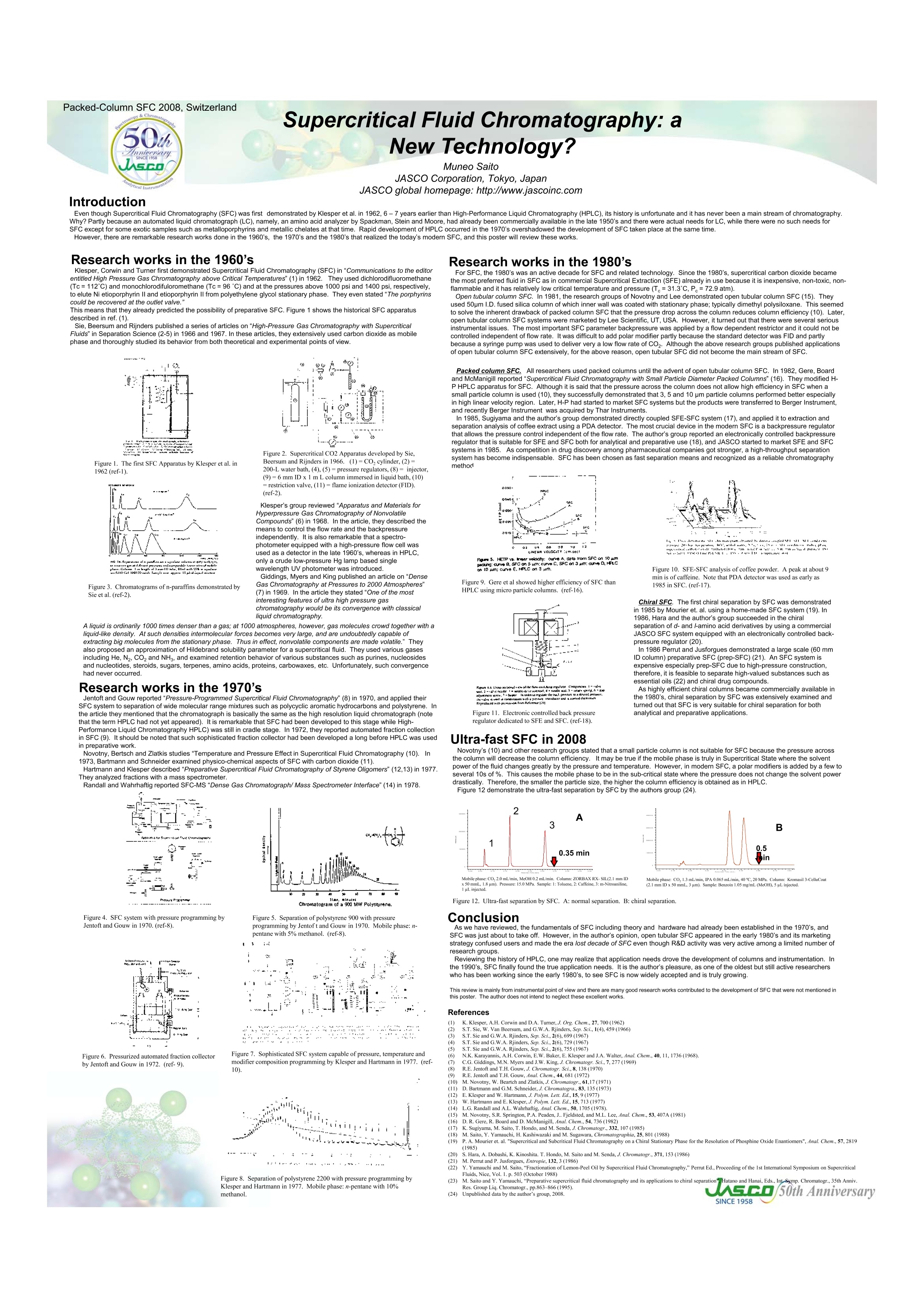
还剩1页未读,是否继续阅读?
佳士科商贸有限公司为您提供《油品中芳香族化合物含量检测方案 》,该方案主要用于其他中芳香族化合物含量检测,参考标准--,《油品中芳香族化合物含量检测方案 》用到的仪器有JASCO SFC4000超临界流体色谱仪
推荐专场
相关方案
更多
该厂商其他方案
更多










